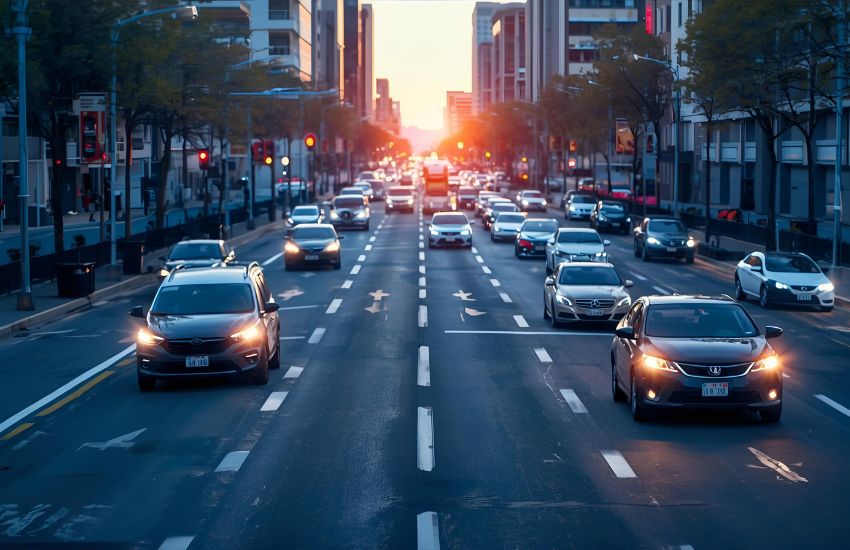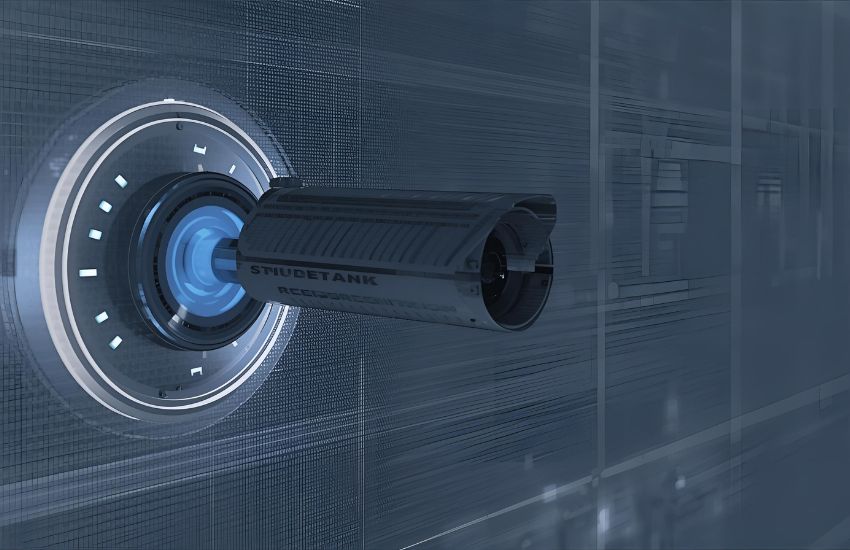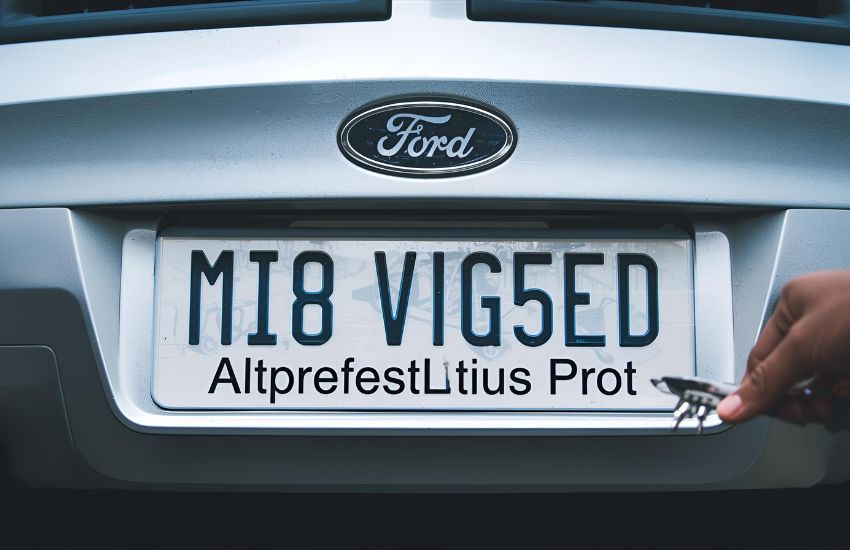The ability to accurately read and record license plates is revolutionizing modern surveillance and security efforts. With advances in license plate recognition technology, an LPR camera can efficiently capture plate numbers even in challenging conditions, providing reliable data for law enforcement, parking management, and access control. Unlike traditional CCTV cameras, specialized license plate recognition cameras are designed for high-speed plate capture with optimized frame rates and enhanced optical capabilities.
Integrating ANPR (Automatic Number Plate Recognition) within advanced camera systems allows for seamless monitoring of vehicles, using features like zoom, infrared (IR) lighting, and built-in SD card recording for secure, on-site data storage. These innovations ensure that critical vehicle information is captured clearly, day or night.
In this blog, you will learn how these cutting-edge technologies work together to enhance security, the role of LPR cameras in effective surveillance, and practical insights into optimizing your system for accurate and dependable license plate recognition.
Enhancing Vehicle Monitoring with LPR Camera Systems and License Plate Recognition Technology

Understanding the Role of License Plate Capture Cameras
To effectively capture license plates, you need specialized license plate capture cameras designed to excel where standard IP cameras may fall short. These cameras utilize advanced optics and infrared illumination to ensure clear imaging, even in low-light conditions or at night. The combination of automatic number plate recognition (ANPR) technology and optimized camera features enables precise license plate detection and character recognition, allowing you to read license plates quickly and accurately, whether vehicles are stationary or moving.
Benefits of Integrating ANPR Software and License Plate Readers
A robust license plate recognition system combines hardware like ANPR cameras with intelligent license plate recognition software to automate vehicle monitoring. This setup allows you to seamlessly capture plates and extract valuable data without manual intervention. The license plate reader processes the images captured, converting them into actionable information such as vehicle identification or access control, thereby enhancing security and operational efficiency.
Secure Storage with SD Card Recording and High-Definition Video
Reliable video recording and data storage are crucial for your surveillance system’s effectiveness. Many license plate capture cameras support SD card recording, including micro SD card slots, enabling local and secure storage of high-definition (HD) footage. This ensures you retain detailed evidence of captured plates and events without relying solely on external servers. Such features improve resilience, especially in environments with unstable network connections.
Specialized Features to Capture Moving Vehicles
One challenge in vehicle monitoring is capturing clear images of moving vehicles. Modern Viewtron license plate recognition and LPC cameras address this by employing fast frame rates and enhanced optical zoom capabilities, allowing you to capture license information reliably at various speeds. The use of infrared light also aids in night-time operation, ensuring that your system functions effectively around the clock.
See more about...best wireless security camera system
ANPR and License Plate Capture: Key Differences in Plate Capture Technology

ANPR and license plate capture represent two crucial technologies in vehicle monitoring, but understanding their differences helps you choose the best solution for your security needs. ANPR, or Automatic Number Plate Recognition, relies on sophisticated software that not only capture images of license plates of vehicles but also processes these images using automatic number plate recognition software to extract readable data automatically. This integration of hardware and software within complete LPR systems allows for real-time analysis, making ANPR highly efficient for security and access control.
In contrast, license plate capture technology primarily focuses on the high-quality imaging aspect—using an LPR camera designed specifically to capture plates at night with features such as night vision and optimized field of view. These cameras excel in delivering clear video recording and still images stored securely on local media like a microsd card, ensuring you have reliable evidence even when network connectivity is limited. The camera supports precise LPR video capture and often integrates seamlessly with Viewtron IP camera NVRs or Viewtron IP camera NVRS, providing robust data management options.
When considering LPR camera installation, factors such as where you mount the camera and the field of view coverage are critical to maximize plate visibility and accuracy. IP LPR technology offers flexibility with remote access and better scalability compared to traditional setups, while AI-driven AI security cameras add an extra layer of intelligence by filtering relevant data automatically. Understanding LPR vs license plate capture helps you balance the need for advanced data processing with quality imaging, enabling you to select the optimal approach for your surveillance environment.
See more about…Remotely Disarm Your Security Camera System
Best Practices for LPR Camera Installation and Optimizing License Plate Reader Performance

Strategic Camera Placement and Mounting
To effectively read and record vehicle license plates, it is essential that your LPR camera is mounted in an optimal position. A camera with at least one vantage point that covers the traffic flow ensures it can capture plates clearly without obstructions. Additionally, including at least one overview camera within your video surveillance systems helps monitor the broader area, providing context to the plate capture data. Proper angle and height adjustments improve the camera’s ability to identify license plates on vehicles, even at varying speeds.
Ensuring High-Quality Video Capture and Recording
Your system’s success depends on capturing high quality video of the license plate under all conditions, including night license plate capture. Selecting an LPR camera with at least adequate frame rates is crucial so that each frame is clear and useful. The camera should support optical character recognition and capture and recognition technologies, enabling precise extraction of plate details. A camera that supports license plate detection and using ANPR software streamlines the process to record license plates accurately in real time.
Leveraging Built-In ANPR and AI Software Features
Many modern LPR cameras are typically equipped with built-in ANPR and AI software designed to enhance plate reading efficiency. These features help your system automatically capture plates, process images, and flag vehicles of interest without manual intervention. The technology ensures the plate is detected reliably, improving your ability to identify license plates on vehicles across different lighting and weather conditions.
Integration and Maintenance for Optimal Performance
Once your camera is correctly positioned and configured, ensure it is properly integrated into your broader video surveillance systems. The camera should be calibrated to capture and recognition capabilities, and you should regularly test the system to maintain accuracy in different scenarios. With continuous monitoring and timely adjustments, your setup will consistently read and record clear video of the license plate, helping you maintain reliable security operations.
See more about...Video Surveillance from Android & iPhone Mobile App
Conclusion
In conclusion, ensuring your plate is detected accurately and you can capture plates clearly depends largely on selecting the right equipment and following best installation practices. LPR cameras like those with advanced optics and integrated technology offer superior performance, making sure your camera is capable of handling various lighting and movement conditions. Whether it’s the camera or software that drives the system, combining both effectively will provide you with the best license plate recognition results for reliable and modern surveillance solutions.
See more about...License Plate Reader Camera Work in the Rain
Frequently Asked Questions (How a License Plate Recognition System Enhances Modern Surveillance and Safety Solutions)
What are the benefits of license plate recognition?
License Plate Recognition (LPR) offers several benefits, including enhanced security, automated vehicle identification, and efficient traffic management. It helps law enforcement track stolen vehicles, enforce traffic rules, and monitor parking areas. LPR systems also reduce manual effort, save time, and improve accuracy in toll collection, access control, and surveillance operations.
What are the benefits of ANPR cameras?
ANPR cameras offer efficient vehicle monitoring by automatically capturing and reading license plates. They enhance security, assist in crime prevention, and support traffic management by detecting stolen or unauthorized vehicles. These cameras also improve parking control, toll collection, and law enforcement operations, providing accurate, real-time data for faster and more effective decision-making.
What is the license plate detection technology?
License plate detection technology uses advanced image processing and artificial intelligence to automatically locate and read vehicle license plates from images or video footage. It employs optical character recognition (OCR) and machine learning algorithms to identify characters, even in poor lighting or motion. This technology is widely used in traffic management, parking, and law enforcement.
What are the advantages and disadvantages of automatic number plate recognition?
Automatic Number Plate Recognition (ANPR) offers advantages like improved security, faster vehicle identification, reduced human error, and efficient traffic or parking management. It helps law enforcement track stolen or suspicious vehicles. However, disadvantages include high installation costs, privacy concerns, potential data misuse, and reduced accuracy in poor lighting or adverse weather conditions.
